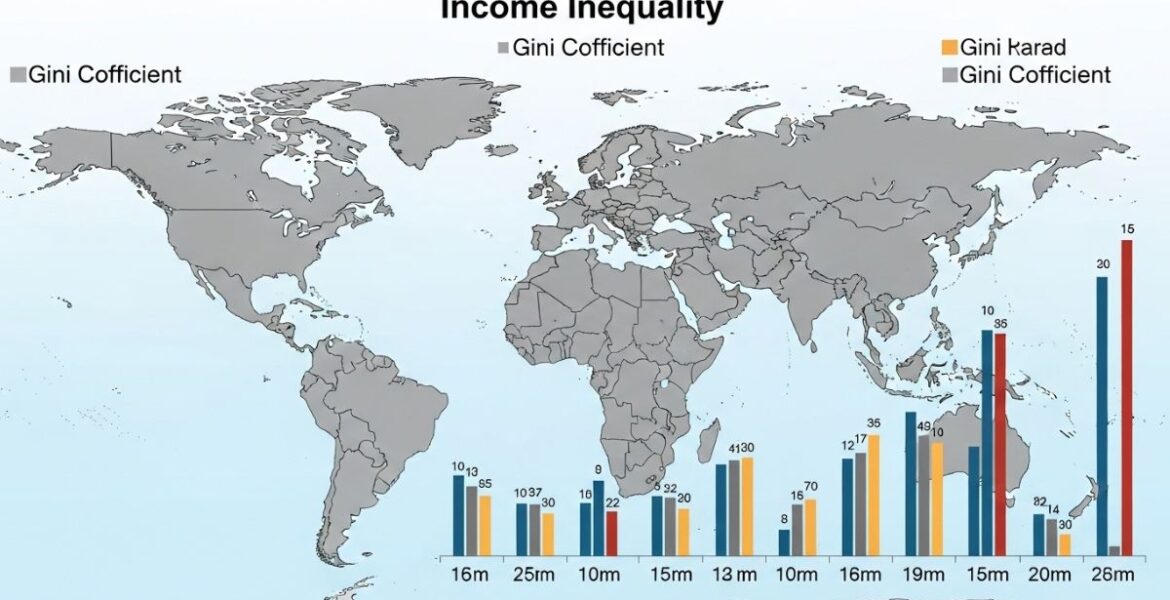Understanding giniä: A Deep Dive into Its Origins and Applications

Giniä is a term that might not be familiar to everyone, yet it plays a significant role in understanding inequality and economic dynamics. This concept offers valuable insights into the distribution of wealth and resources within societies. But what exactly is giniä, and why should we care? As we delve deeper into its origins and applications, you’ll discover how this measure has evolved over time and impacted real-world scenarios. Join me on this journey as we unravel the complexities of giniä, shedding light on its importance in both academic circles and policy-making arenas. Whether you’re an economics enthusiast or simply curious about social equity, there’s much to explore in the fascinating world of giniä.
The History and Development of giniä
Giniä traces its roots back to the early 20th century, named after Italian statistician Corrado Gini. He developed this measure as a way to quantify income inequality within a population. His work aimed to provide clarity on wealth distribution.
Over the decades, giniä evolved beyond economics and found applications in various fields. Researchers began utilizing it in sociology, health studies, and even environmental science. The versatility of giniä made it an attractive tool for scholars worldwide.
As data collection methods improved with technology, giniä’s accuracy also enhanced. Modern algorithms can analyze vast datasets efficiently, allowing for real-time insights into socio-economic disparities across regions.
Today, giniä stands as a crucial metric used by governments and organizations alike. It provides valuable information that informs policy decisions aimed at addressing inequality and fostering equitable growth.
Real-world Examples of giniä in Action
Giniä finds its footing in various sectors, showcasing its versatility. One notable example is the assessment of income distribution within countries. Nations like Sweden and South Africa illustrate stark contrasts in wealth inequality through giniä coefficients.
In Sweden, a relatively low giniä score reflects a more equitable society where resources are shared fairly among citizens. This promotes social welfare and stability.
Conversely, South Africa grapples with high levels of inequality as indicated by its elevated giniä coefficient. The disparity underscores challenges faced in economic development and social cohesion.
Beyond economics, giniä applies to education systems too. By analyzing student performance across different demographics, policymakers can identify gaps that need addressing for equitable educational opportunities.
These examples highlight how giniä serves not just as a measurement tool but also as a catalyst for meaningful change across diverse fields.
Criticisms and Limitations of giniä
Despite its widespread use, giniä has faced significant criticisms. One major drawback is its inability to capture the nuances of income distribution. It simplifies complex economic realities into a single number, often obscuring important disparities.
Additionally, giniä does not account for factors like wealth concentration and social mobility. A society could have a low gini score yet still struggle with deep-rooted inequality due to inherited wealth or systemic barriers.
Another limitation lies in its insensitivity to population size changes. As populations grow or shrink, the implications on income distribution can be profound but remain unreflected by a static gini measurement.
Moreover, critics argue that relying solely on giniä can lead policymakers astray. Without considering other socioeconomic indicators, decisions may lack breadth and fail to address underlying issues effectively. This calls for a more holistic approach when assessing equity and fairness in our societies.
The Role of giniä in Policy-Making
Giniä plays a pivotal role in shaping policy-making decisions across various sectors. Policymakers often rely on this metric to understand income inequality within different populations.
By analyzing giniä coefficients, government officials can identify areas of economic disparity. This data helps them prioritize resource allocation and design targeted interventions.
Moreover, giniä serves as a benchmark for assessing the effectiveness of social programs over time. By tracking changes in the index, policymakers can evaluate whether their initiatives are making a meaningful impact.
International comparisons also benefit from giniä analysis. Countries use these insights to learn from one another’s successes and failures, informing their own policies.
Integrating giniä into policy frameworks fosters informed decision-making that aims to promote equity and social justice. As nations grapple with economic challenges, understanding this measure becomes increasingly critical for effective governance.
Future Implications and Possibilities for giniä
The future of giniä holds significant promise, especially in an increasingly interconnected world. As data analytics and machine learning advance, the application of giniä can expand dramatically.
Imagine using giniä to assess inequality not just economically but socially. This could reshape how we understand disparities in health, education, and technology access.
Moreover, as global populations shift and urbanize, giniä might play a crucial role in urban planning. Cities could harness these insights to create more equitable infrastructure.
Innovations like real-time data collection may also enhance giniä’s impact. Policymakers could make swift decisions based on current inequalities rather than outdated statistics.
As awareness increases around social justice issues, demand for transparency will likely grow too. Giniä’s metrics may become essential tools for advocacy groups aiming to drive change effectively. The potential applications are vast and largely untapped at this stage.
Conclusion:
The exploration of giniä reveals its significance in understanding societal dynamics. With roots tracing back to early economic theories, giniä has evolved into a crucial tool for analyzing inequality and resource distribution.
Real-world applications demonstrate how giniä influences various sectors, from social sciences to economics. Governments and organizations leverage this concept to evaluate the effectiveness of policies aimed at reducing inequality. However, it is essential to recognize the criticisms surrounding giniä; oversimplification can mask deeper issues within data interpretation.
You may also like

Unlocking the Secrets of faibloh: A Comprehensive Guide

Top 5 Reasons to Dive into the World of erothtos Today

Leave a Reply